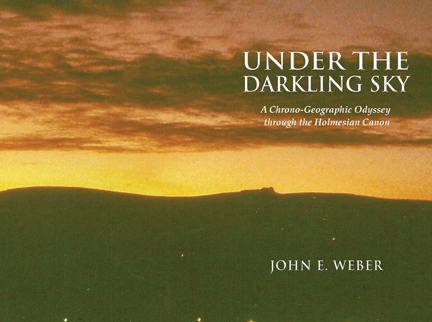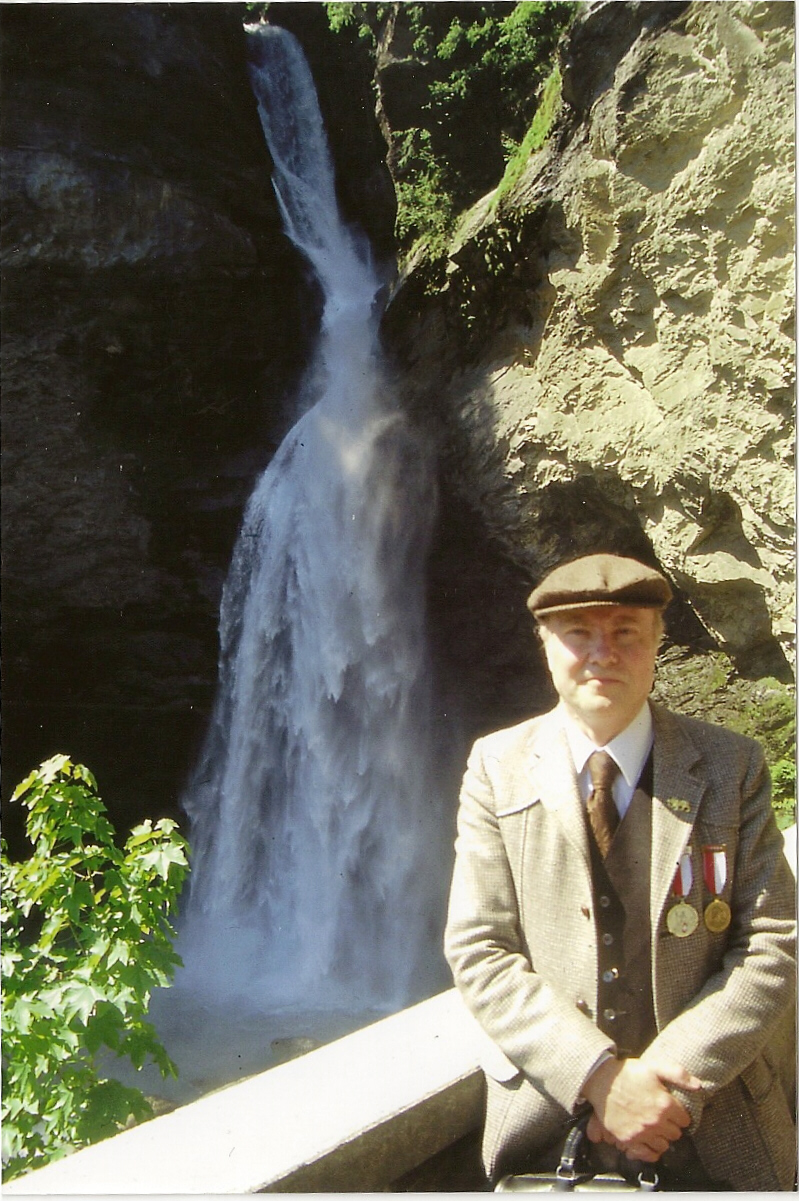
Under the
Darkling Sky
A Chrono-Geographic Odyssey Through the Holmesian Canon
John E. Weber


With
Location photographs and Ordance Surveys
Canonical chronologies and location guides are not uncommon, but Under the
Darkling Sky is the first volume to combine both disciplines. Utilizing
period maps, weather reports, astronomical conditions, and newspaper accounts,
the world of Sherlock Holmes and Dr. Watson becomes substantive, much of which
still survives to this very day. After the introductory "Elementary Tenets"
-- which lay the foundation of the main text, the succeeding
chapters are devoted to the date and location of each of the sixty cases, along
with some observations, not always of a Canonical bent. The author also uses
some slightly irreverent humor to lighten the load, so to speak, and freely
casts some speculation on certain issues designed to keep the Holmes fires
burning.
John Weber has been a
Holmesian since the early 60’s and a member of the Sherlock Holmes Society of
London for over twenty-five years. He is also a founding member of the Syracuse
Cinephile Society, a classic film group that sponsors an annual international
film convention, Cinefest. His other pastimes include theatre (especially the
works of an obscure playwright/ poet from Stratford Upon Avon), opera,
palaeontology, astronomy, trains, labyrinths, local history, walking, and
reading. He enjoys playing golf, but plays it badly, so don’t go looking for his
name in the lists of the next Open Championship in St. Andrews. He lives in
Camillus, New York with his cat, Pepper.
Reviews and Letters:
Dear George,
I received Under the Darkling Sky last week and
I’m in the process of reading it for a second time. It is a wonderful
book. While I am not versed in the geographical Holmes, it was
fascinating to read Mr. Weber’s deductions on canonical locations and to
see “Appledore Towers”, the back wall of Watson’s that Holmes clambered
over or the 1891 photo of Meiringen and the contemporary picture of the
“Englischer Hof”. They will certainly add to my enjoyment of the stories
the next time I read them. I also liked the illustrations that
accompanied the text. I couldn’t make out the signature and I couldn’t
find his (?) name listed anywhere. (By the way, the sundial illustration
on page 197 cuts off part of the final paragraph.)
My interest is in the chronological, and Mr. Weber’s
work is a worthy addition that belongs next to the classic eight. The
amount of work he has done to date the stories is obvious and
impressive. If I may, though, I would like to comment on a few things.
It was disappointing that The Sign of Four
chronology gets only a page and a half discussion. It is perhaps the
most important adventure to date. I realize that Mr. Weber believes that
Bernard Davies Summer/Winter 1990 SHJ article is the “most well-reasoned
solution”, but for those of us who haven’t seen it, a summery of some of
the main points in comparison to other theories would not be out of
place. The Hound had a little over six pages for its chronology.
Also, as Darkling is a chrono-geographic exam
of the canon, I was hoping to see a resolution to the New Brighton rail
station controversy. Peter Wood in a sherlockian.net article on
chronology problems states that the station was not built until 1891
(score one for Professor Christ’s August 1891 date), however John Hall
in “I Remember the Date Very Well” mentions an article in The
Musgrave Papers 1992 that says the station was open in March 1888.
As this is both geographic and chronological, I was hoping for Mr.
Weber’s expertise on the matter when I ordered the book. Sadly, it was
not to be.
In the minor quibbles department: on page 325,
“successive stories in the ‘Return’ series, The Reigate Squires
and The Crooked Man” should be “Memoirs”. Also, I don’t know what
page it’s on, but Holmes’ alias during the Hiatus was Sigerson not
Altamont.
All in all, well done.


